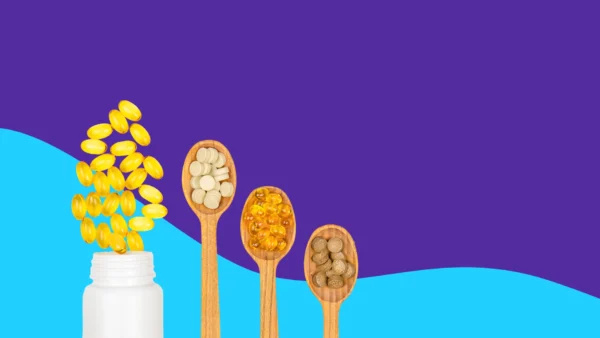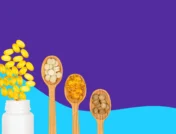It’s the middle of January. The sun starts setting around 4 p.m. every day; the temperatures are struggling to rise above 35 degrees. And it’s the fourth day in a row that you’ve come home from work, put on your sweatpants, and collapsed on the couch to watch TV until you fall asleep.
Is it a case of the winter doldrums… or something more serious, like seasonal affective disorder?
Seasonal affective disorder (SAD)—also known as seasonal depression—impacts about half a million people in the United States every year, according to the Cleveland Clinic. It typically strikes in late fall and winter, but can also occur in the summer months.
If a change in season has left you feeling down, here’s how to know when to reach out for help.
How is seasonal affective disorder different from clinical depression?
Even though some people dismiss seasonal depression as nothing more than the “winter blues,” it’s still a depressive mood disorder—it just happens to be triggered by changes in seasons, says University of Missouri Health Care psychiatrist Arpit Aggarwal, MD.
When diagnosing a patient with seasonal affective disorder, mental health providers look at how seasonal patterns relate to your behavior changes, activities, and overall mood.
“[SAD] can be diagnosed when at least two episodes of major depression (with each episode lasting for at least two weeks) have occurred in the last two years,” Dr. Aggarwal says.
In other words, experiencing fatigue, loss of appetite, or low energy for a few days at a time is likely not depression—but if your symptoms persist or happen on a seasonally recurring basis, you may be dealing with more than a temporary slump.
Symptoms of seasonal affective disorder
It’s not always easy to recognize the symptoms of depression in yourself, especially in the winter, when nearly everyone wants to hunker down and stay in bed. According to Dr. Aggarwal, these are the most common symptoms of major depression that may occur with SAD:
- feeling depressed or “down” almost every day;
- a loss of interest in activities you used to enjoy;
- a loss of energy or appetite;
- changes in sleep habits or trouble sleeping;
- difficulty concentrating;
- feeling sluggish or agitated;
- and feelings of guilt or thoughts of death or suicide.
It’s also important to note that some SAD symptoms vary depending on the season.
“The more common type of seasonal depression that occurs in winter usually presents with increased sleep and appetite, weight gain, and low energy,” says Aggarwal, “whereas seasonal depression occurring in summer may include sad or irritable mood, loss of appetite and weight, agitation, and insomnia.”
Seasonal affective disorder causes
Even though we’re not usually aware of it, our bodies are highly attuned to our environment. When the seasons change, so do many of the things around us—chief among those changes, though, is the amount of sunlight we receive every day.
“Sunlight availability has a big part in causing seasonal depression, as people living farther from the equator have more chance of [developing] seasonal depression,” says Dr. Aggarwal. “Changes in sunlight availability can affect hormones like serotonin and melatonin [and also your] circadian rhythm.” One study found that SAD could occur when vitamin D stores were low, possibly because of decreased sunlight exposure.
All of these risk factors, per the Mayo Clinic, can contribute to SAD and winter depression: Melatonin regulates your sleep patterns, while serotonin is a brain chemical that affects mood. Lowered amounts of either can trigger depressive episodes, as can the disruption to your body’s biological clock and usual routine.
What about summer depression, when there’s an abundance of sunshine? Aggarwal says there is a theory that increased pollen counts and allergies during the spring and summer may trigger SAD, though it’s a theory not yet fully understood.
Notably, there is also a genetic component to SAD, which has been found to run in families—and unfortunately, some people with a family history of depression are simply more susceptible than others. Per the National Institute of Mental Health, women and young adults, people who live far from the equator, and people with a history of depression or bipolar disorder may experience SAD at higher rates.
Getting help: Seasonal affective disorder treatment
Even though seasonal depression may come and go, there’s no need to suffer until the seasons change again. There are several treatment options available for all types of depression, like taking antidepressant medication and receiving counseling, talk therapy, or cognitive behavioral therapy (CBT) from a qualified mental health professional.
There’s even one treatment prescribed solely for seasonal forms of depression: light therapy a.k.a. phototherapy. Dr. Aggarwal says it’s usually the first line of treatment for seasonal depression and involves getting exposure to bright light after waking up using a special lightbox. It’s considered safe and can be implemented at home with mild side effects. It may not completely eliminate symptoms for nearly half of people with SAD, according to the National Institute of Mental Health. But it can help to improve symptoms, especially in combination with other therapies.
Some physicians recommend a vitamin D supplement for patients with low levels of the “sunshine vitamin.” But, research on its efficacy as a treatment has mixed results.
Ultimately, it’s important to remember that feeling sad or uninspired for a few days during the winter months may be normal—but struggling to function, feeling hopeless, or having suicidal thoughts is not.
“If you feel sad for more than two weeks at a time and it starts interfering with your daily activities, you should talk to your primary care doctor or a mental health provider to see if more help is needed,” Dr. Aggarwal advises.
Healthy sleeping habits, aerobic exercises, and daily walks all have a positive impact on people suffering from SAD. In some cases, antidepressants have shown overall symptomatic improvement.
For more information on seeking help or treatment for depression, visit the National Alliance on Mental Health or call the Substance Abuse and Mental Health Services Administration helpline at 1-800-662-HELP. If you or anyone you know is suffering from suicidal thoughts, call the National Suicide Prevention Lifeline at 1-800-273-8255 or visit the nearest emergency room.











